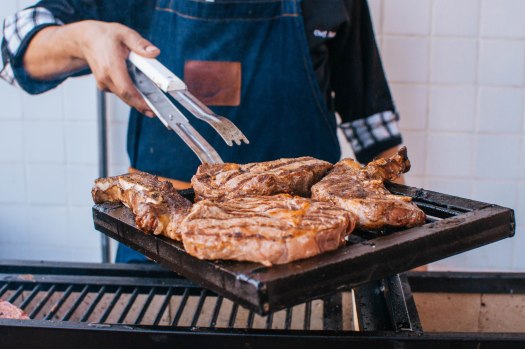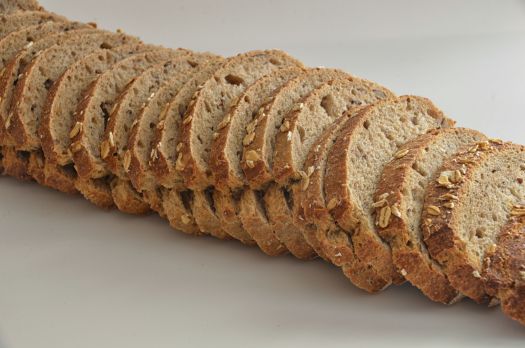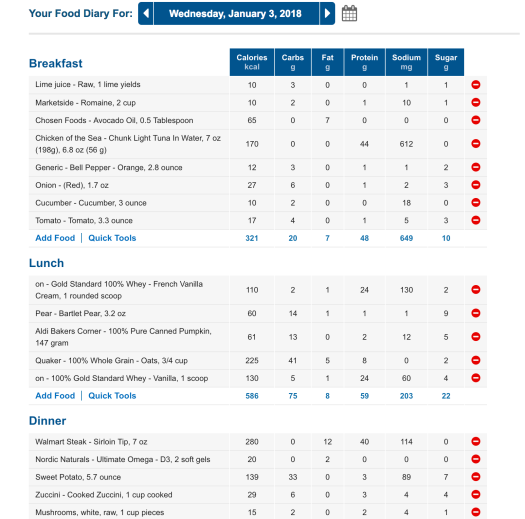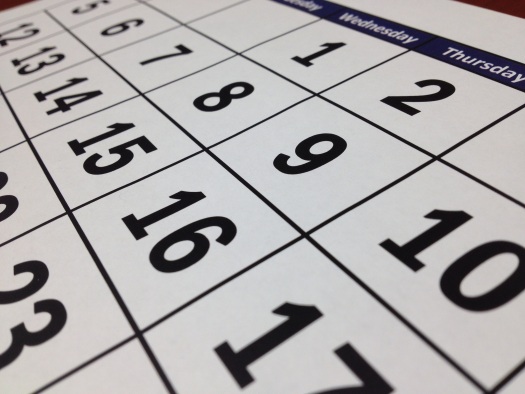The last few months of the year are anything but relaxing for many people. Despite the bombardment of seasonal advertisements promising joy, togetherness, and peace, this is the time of year when many of us feel the most unhappy, overwhelmed, and stressed.
As the days get shorter and the temperatures drop, many people start to feel down in the dumps. Motivation to exercise and eat healthy wanes accordingly.
Additionally, holiday events and family time can create tons of extra stress. Even if you adore the holidays, you may still worry about purchasing gifts for your list, managing seasonal obligations, and making healthier choices amidst a never ending supply of drinks, sweets, and fried foods.
Regular exercise and healthy eating are often the first things to go when you’re stressed and short on time. The good news is, since you’re already aware of this risk, you can take steps ahead of time to make your life easier as you move into the fourth quarter.
Here are three steps I recommend you take now, before things get crazy:
- Adjust priorities. For most people, the last quarter is a bad time to chase a fat loss goal. You will drive yourself crazy trying to avoid every tasty treat that crosses your path between October and December. Rather than setting yourself up to fail with too much restriction, change course and try to maintain your physique or use extra holiday calories to build strength or muscle.
Read more: Seasons of Lifting
- Ask, “What does success look like for me?” We all have different struggles. For me, success during the holidays means avoiding binging. For you, it may mean staying consistent with your exercise regimen, even when you’re traveling. Yet another person’s vision of holiday success includes keeping their drinking under control. Determine what is most important to you so you can prioritize the behaviors and strategies that get you where you want to go.
- Manage your minimums. I learned this phrase from Precision Nutrition and I think it’s especially relevant in this context. What are the bare essentials you must do to keep yourself on track? Once you’ve figured these out, direct most of your effort into knocking them out consistently. Everything else you do is just an added bonus.
Below, I share specific strategies for managing training and healthy eating during the fourth quarter (or any other period when you’re under a lot of stress). Just remember to focus on the things that matter most to you. You don’t need to do everything I’m suggesting here to stay on track this holiday season.

How to exercise over the holidays
Do less, but do it consistently.
I’ve written about this over and over and over, but it bears repeating here: you do not need to spend hours and hours each week exercising. This is especially true if you’re just trying to maintain your current level of fitness during a period of stress. You’ll see better results by being consistent through the end of the year than you will by occasionally following the “perfect” workout plan and giving up by December.
You also don’t need a full hour for a great workout. If you only have 30, 20 or even 15 minutes to exercise, you can still do something worthwhile. When you release yourself from the need to train for long periods of time, you may actually find more time during the week for exercise.
Plan ahead.
Sit down with your calendar for the remainder of the year and determine how many workouts you can realistically commit to every single week. For most of you this will be just two or three workouts.
You should also consider the length of time that works best with your schedule. For example, if you have to train over your lunch break but can’t be away for more than an hour, you’ll do better with 20-30 minute workouts than 45 minute workouts.
Whenever possible, schedule your workouts into your calendar the same way you do with any other obligation. This helps protect your time and demonstrates to yourself you’re committed to training.
Read more: 13 ways to find more time for exercise
Get creative when you’re away from the gym.
Many people struggle to come up with workout ideas and inspiration when they’re away from their regular gyms. I wrote an entire article about training on the road. Check it out for lots of ideas about modifying your workouts when you’re traveling this holiday season.
How to eat healthy over the holidays
Plan ahead.
When you’re overwhelmed and stressed out, the last thing you want to do is spend precious time cooking food every single day. If you’re not already batch-cooking some of your weekly meals, now is a good time to start. Here are two approaches you can use:
- Set aside a few hours on the weekend to prepare as many full meals as possible.
- Prepare some items to use in multiple dishes. Make a batch of shredded chicken in the slow cooker, roast a pan of veggies, hard boil a dozen eggs, prepare a bunch of quinoa in the instant pot, etc. You could also chop up raw veggies to throw into soups, eggs, salads, and stir frys throughout the week.
Read more: How I learned to cook (and you can too)
Use a delivery service.
Not everyone has the time or desire to grocery shop or cook all of their meals. If this sounds like you and you have the means to hire a delivery service, you’ll save a ton of time and hassle. You can find services that send you raw ingredients, fully cooked meals, and everything in between. Do some research to decide which option makes the most sense for you.

Make healthier choices when eating out.
It’s unrealistic to expect to eat only healthy home-cooked meals this time of year. If you’re eating out at a restaurant, attending an event, or simply navigating the buffet at family Thanksgiving, try following these tips:
- Prioritize protein and veggies and be sure to eat some with every meal.
- Take just one plate of food, and try to use smaller dishes when possible.
- Eat slowly and stop when you’re 80% full (not stuffed).
- If you’re going to eat junkier foods (sweets, fried foods, etc.), make sure it’s something you really enjoy. Don’t eat the store-bought cookies just because they’re there.
Read more: How to eat healthy when you’re eating out
Be mindful of alcohol.
It’s common to reach for a drink when you’re feeling stressed. However, some people lean more heavily on alcohol during the holidays than the rest of the year. Alcohol flows freely at holiday parties and family gatherings, and it’s tough to say no.
If you know you have a tendency to drink more than you’d like, try following one of these strategies:
- Decide ahead of time how many drinks you’re going to have and stop once you hit this number. Recruit an accountability buddy at the same event to help keep you honest.
- Drink a virgin drink (like soda water with lemon or coke zero) to make it seem as if you’re drinking. Some of my clients feel peer pressure to drink at work gatherings, and this strategy makes it easier to fit in with the crowd.
- If you’re drinking as a response to stress, try to find alternative releases. Go for a walk, take some deep breaths, converse with a friend or loved one, read a book, exercise, meditate, take a bath, journal…the list goes on and on. Experiment to find what works for you.
Read more: 3 Strategies to Successfully Navigate Holiday Eating
With everything else, do your best.
You can’t do everything all at once. When dealing with lots of stress, your exercise and eating routines can easily fall by the wayside. It’s important to focus on the most important things and forget about anything not essential to your success.
Adjust your priorities and figure out what success looks like for you. Determine the one or two things which will make the biggest difference. Nail these as consistently as you can and do what you can to manage stress in the rest of your life, then try to relax and enjoy the season. If you prepare ahead of time, it’s much easier to thrive through a stressful period.
If you’re worried about staying in shape through the end of the year, I’ve got your back. Fill out an application for my online training program and we’ll work together to create a plan to keep you on track without losing your mind.

























